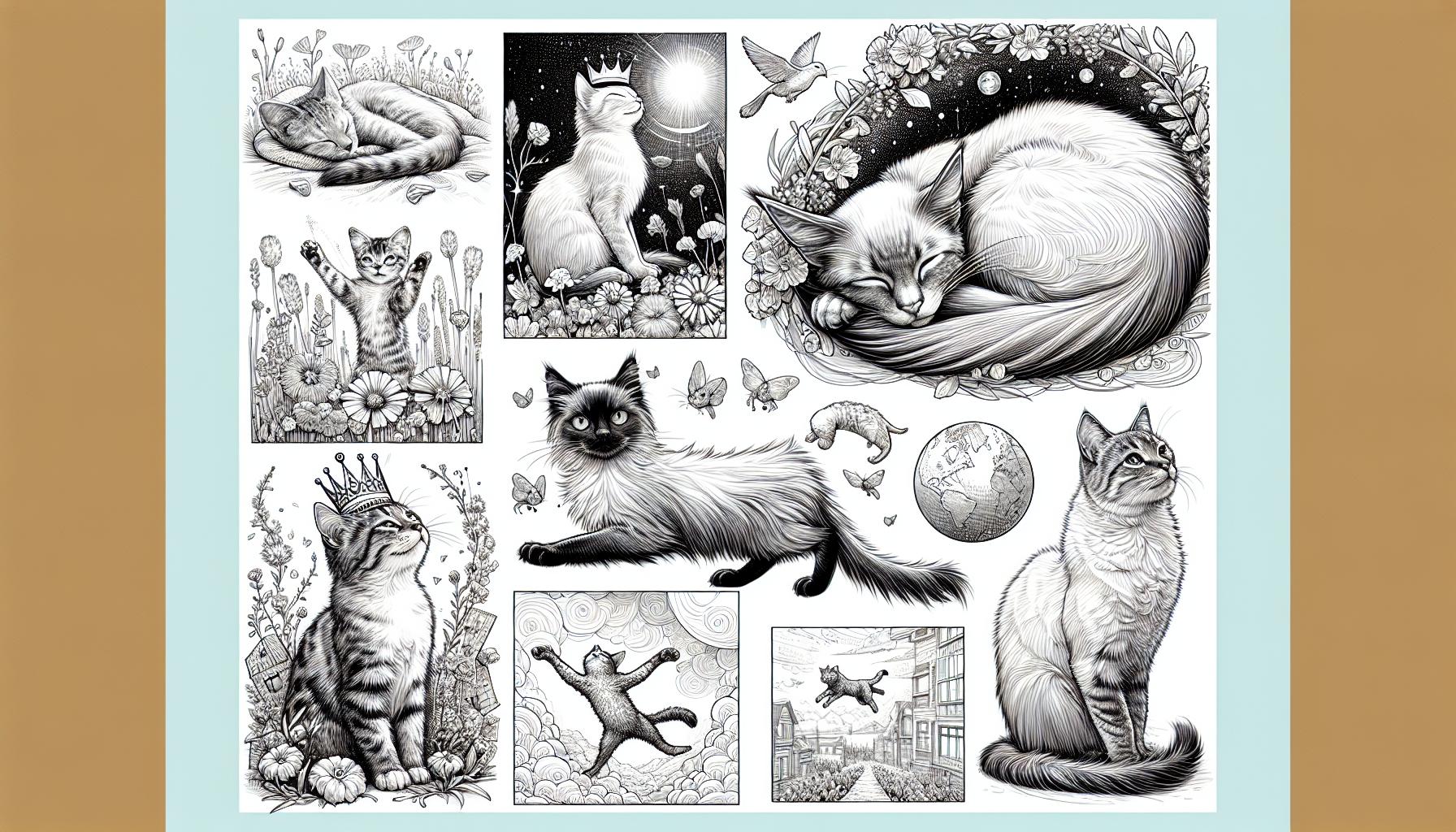30 Engaging Cat Drawing Ideas for Artists of All Levels
Have you ever found yourself staring at a blank page, pencil in hand, wondering how to bring the playful spirit of a
You’re not alone.
Cats, with their adorable antics and expressive faces, make for irresistible subjects, yet capturing their essence can be a challenge.
From the serene sight of a
I’ve discovered that the key to creating engaging
That’s why I’ve created 30 easy and cute
Whether you’re a beginner looking to master simple shapes or an experienced artist seeking to add more personality to your sketches, this list has something for everyone.
Let’s jump into the world of
Classic Cat Poses
Capturing the sheer elegance and varied personalities of cats can be quite the artistic journey.
Hence, focusing on classic
Sitting Cat
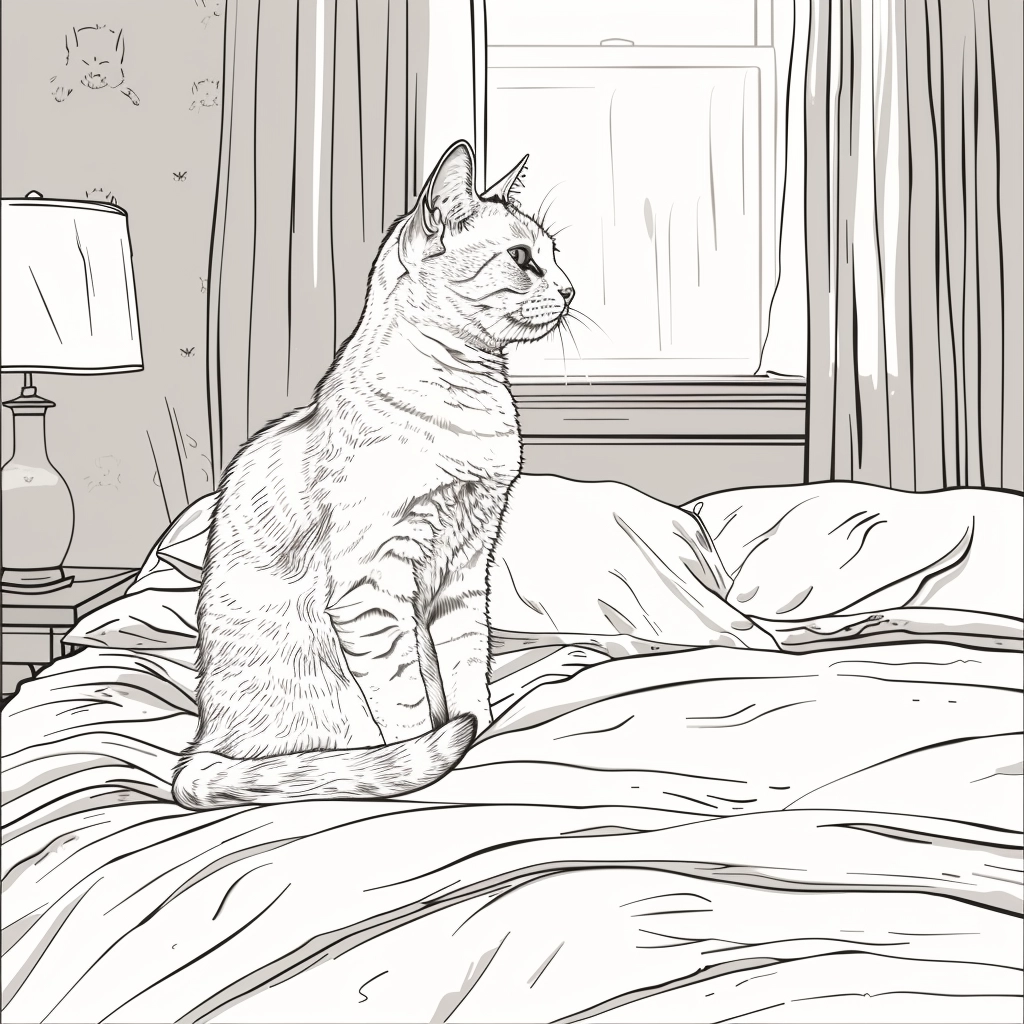
Drawing a sitting
Ears are crucial – remember, they’re triangular but with slightly rounded tips. For the eyes, large and expressive works wonders, capturing the
A softly curved tail wrapping around the body brings the whole pose together, embodying the tranquil yet alert essence of a
A sitting
Sleeping Cat
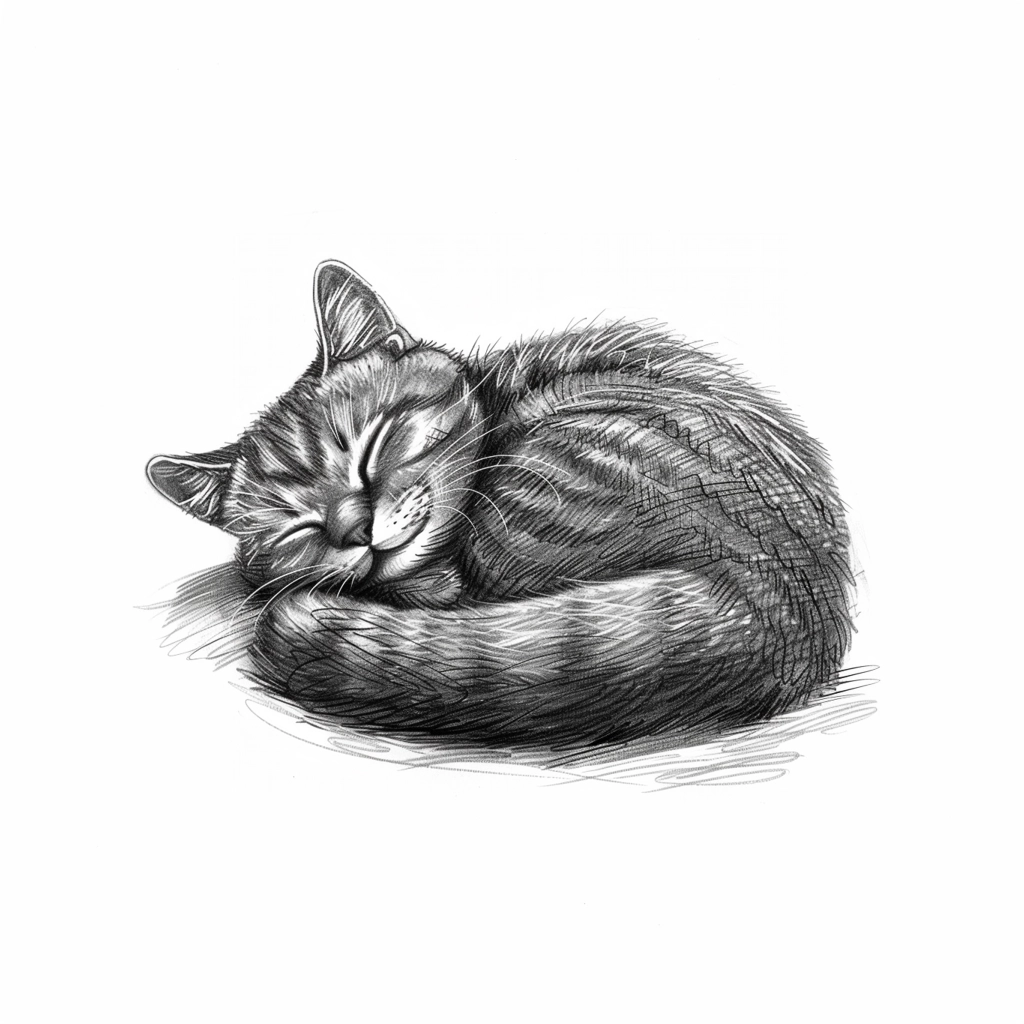
This is where a peaceful narrative unfolds.
To draw a sleeping
The beauty in drawing a sleeping
Remember, the paws are key; tucked underneath or perhaps one gently resting over the other, symbolizing utmost relaxation.
Imagine a
That’s the mood you’re aiming to translate onto your paper.
Prowling Cat
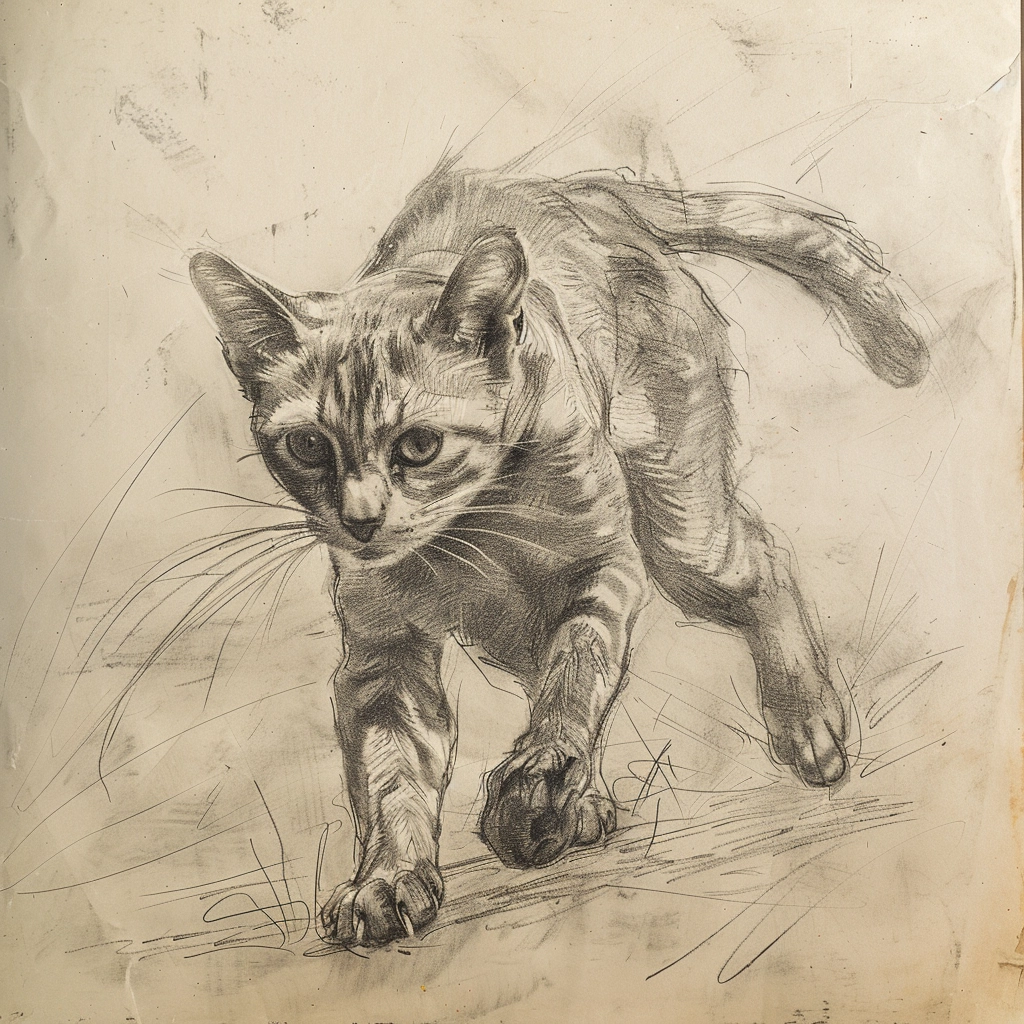
A prowling
This pose is slightly more complex, given its depiction of movement and anticipation.
Start with a more elongated body, illustrating taut muscles ready to spring into action.
The legs should be drawn with purpose, showcasing the
The head should be forward, with ears perked and eyes intently focused, ready to pounce.
When drawing a prowling
It’s a moment frozen in time, showcasing the
In blending these classic poses into your repertoire, you’ll not just be drawing cats; you’ll be weaving stories and capturing moments.
Each pose offers a gateway into the
Hence, practice, patience, and observation are your best tools. Remember, each stroke adds depth, and with every detail, you’re not just creating art; you’re telling a story.
Expressive Cat Faces

Capturing the essence of a
From the cheerful to the curious, and even the frightful, mastering these expressions can breathe life into your sketches.
Smiling Cat

When drawing a smiling
Start by sketching almond-shaped eyes, slightly squinting to convey happiness. The mouth should curve upwards, akin to a crescent moon, to depict a content and smiley feline.
Remember, cats often smile subtly, so don’t overdo the curve.
Add whiskers pointing slightly upward to enhance the cheerful demeanor. For a personal touch, I sometimes add a blue bow tie, giving the
This small accessory can dramatically uplift the sketch’s mood, making it not just a
Curious Cat
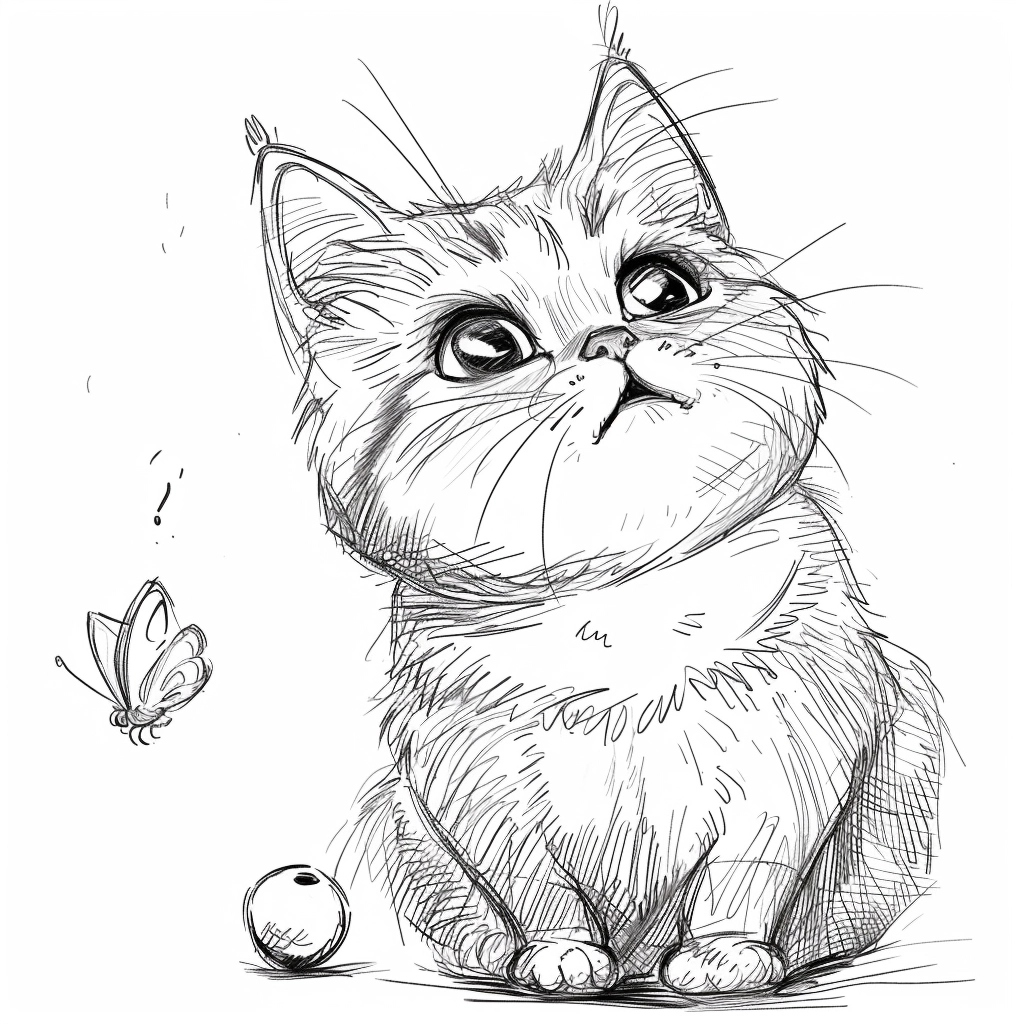
Curiosity is a defining trait in cats, and capturing this in your drawing adds a layer of realism and relatability.
Begin with wide, round eyes, pupils dilated, to reflect focus and interest.
The ears should be perked up, forward-facing, as if concentrating on something intriguing. I recommend drawing the
For those wanting to add more context, sketching small objects like a butterfly or a ball nearby can effectively convey what has caught the
Scared Cat
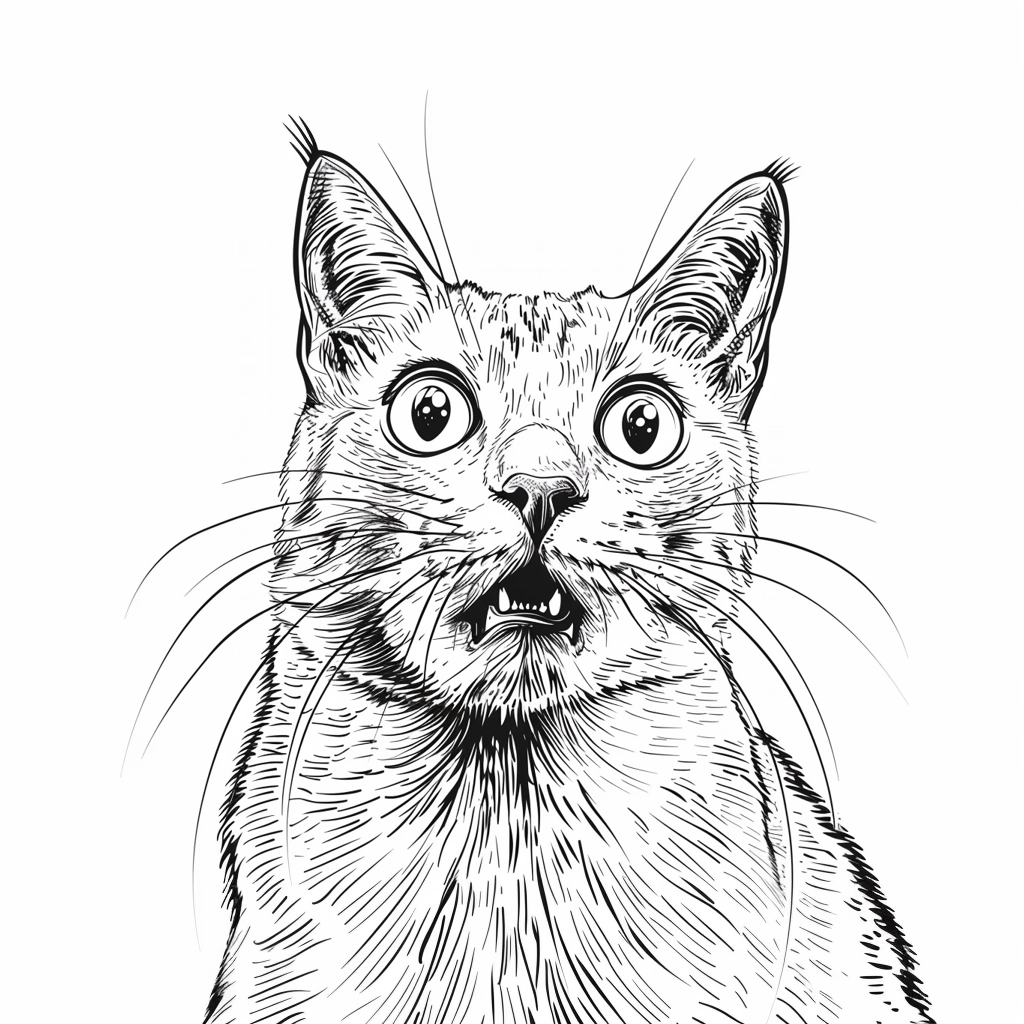
Conveying fear in a
The eyes are wide open, with dilated pupils, capturing the
When I illustrate this, I add fur standing on end to emphasize the frightened state.
The back might be arched, and the mouth slightly open, as if hissing or ready to meow in protest.
Employing simple shapes and lines to accentuate these features can make your scaredy
Transitioning between these expressions in your artwork allows for a diverse portrayal of feline moods, enriching your drawings with depth and personality.
As you practice, you’ll find it becomes second nature to weave these expressions into your
Remember, the key lies in observing and capturing these nuances, adding your unique artistic flair.
Themed Cat Drawings
After mastering classic
Themed
Here’s how I jump into themed
Royal Cat

Drawing a royal
Start by envisioning your
I often begin by sketching a poised
To further emphasize the royal status, you can adorn your
The key here is in the details; the more elaborate, the better. An interesting tip is to use historical royal garments for inspiration, thereby giving your drawing authenticity and depth.
Incorporating royal elements like scepters or a royal orb beside your
Imagine your
Magic Cat
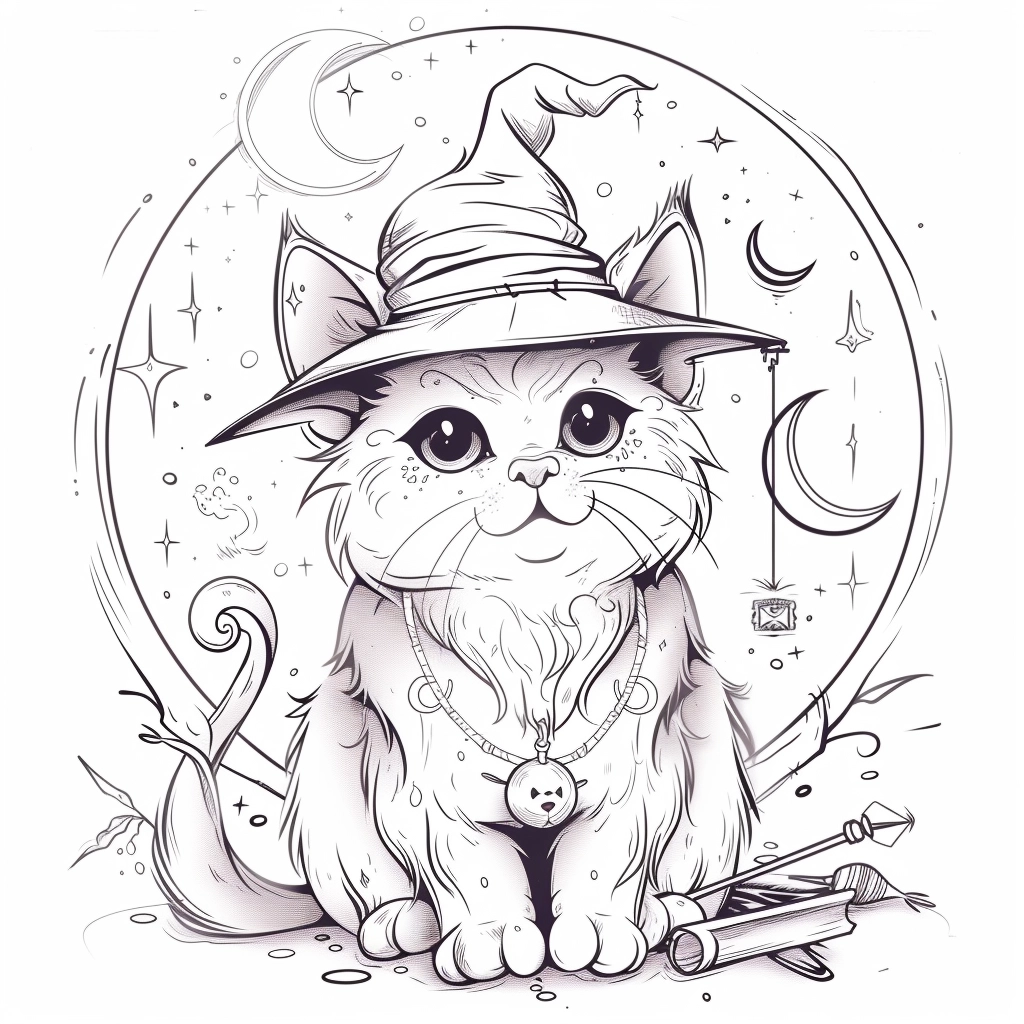
Magic cats tap into the fantastical, opening a area of endless possibilities.
These cats are not mere pets but wielders of mystical powers.
When I draw a magic
Whether it’s a wizard
A great starting point is to sketch your
For cats with a darker, more mysterious magic, incorporating shadows or mist swirling around them works wonders.
Don’t forget accessories like enchanted necklaces, spell books, or a witch’s hat.
These small additions can significantly impact, making your
Halloween Cat
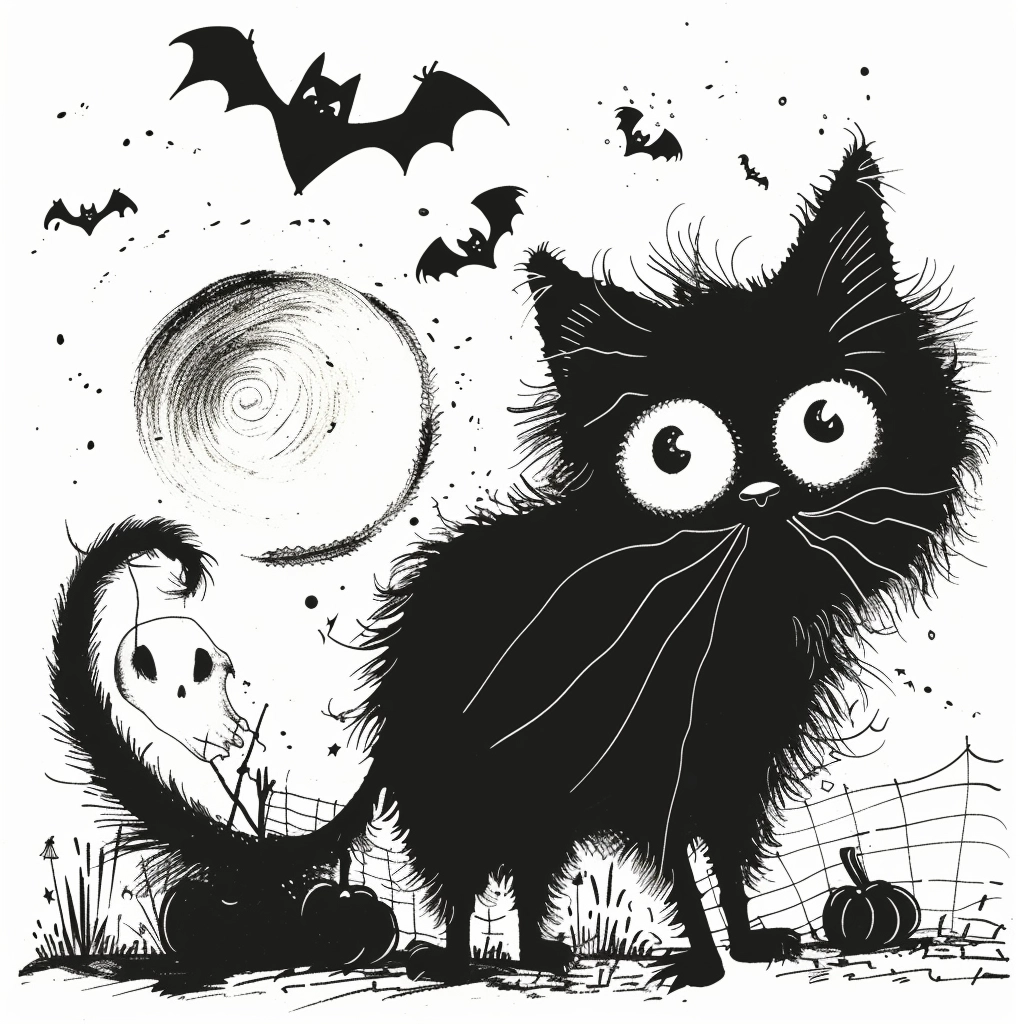
Halloween cats are all about capturing the spooky yet playful spirit of the holiday.
A classic approach is to draw a black
But, I like taking it a step further by drawing my cats in dynamic Halloween scenes.
Think of a
Adding Halloween elements, such as cobwebs, bats, or a full moon, can set the perfect backdrop for your Halloween
Experiment with your
A mischievous grin or an eerie stare can dramatically enhance the mood of your artwork. Coloring plays a crucial role too; utilizing a palette of oranges, blacks, and purples can tie the whole Halloween theme together.
Themed
From royal cats in their opulent attire to mystical felines wielding unknown powers, each theme presents unique challenges and opportunities for storytelling through art.
And, let’s not forget the whimsy and fright of Halloween cats, which always delight audiences.
Hence, as you venture into themed
Cats in Action
Drawing cats in motion offers a fantastic opportunity to explore dynamism and expression in your artwork.
Capturing the essence of movement not only brings your drawings to life but also challenges you to think about anatomy and pose in new ways. Let’s jump into some captivating action poses for your next project.
Leaping Cat
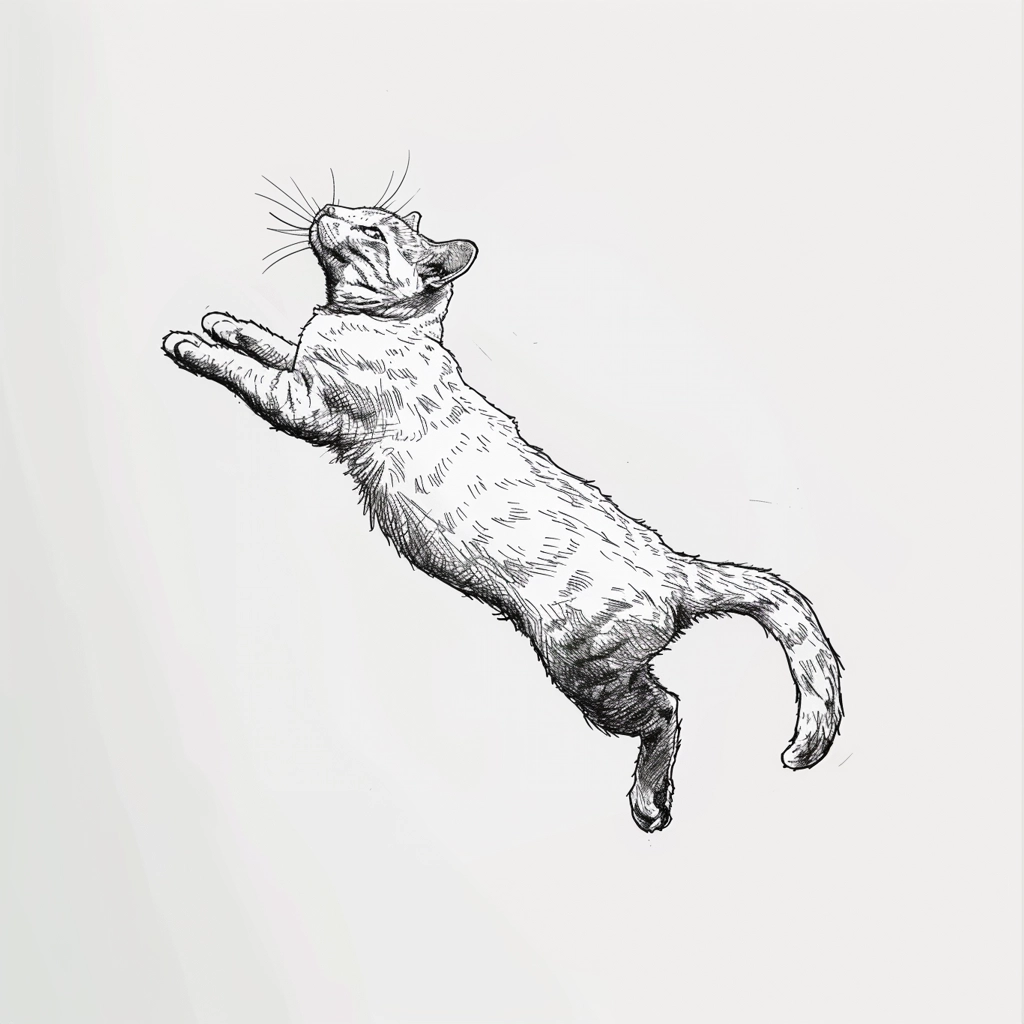
Illustrating a
Start with a simple, dynamic line to define the arc of the leap.
I always ensure to capture the tension in the back legs and the forward reach of the front paws, as this adds realism to the motion.
To depict the energy, sketch the tail outstretched, balancing the leap.
Remember, during a leap, a
For an added touch, include a target like a toy or a butterfly, giving the leap purpose.
Cat Playing with Yarn
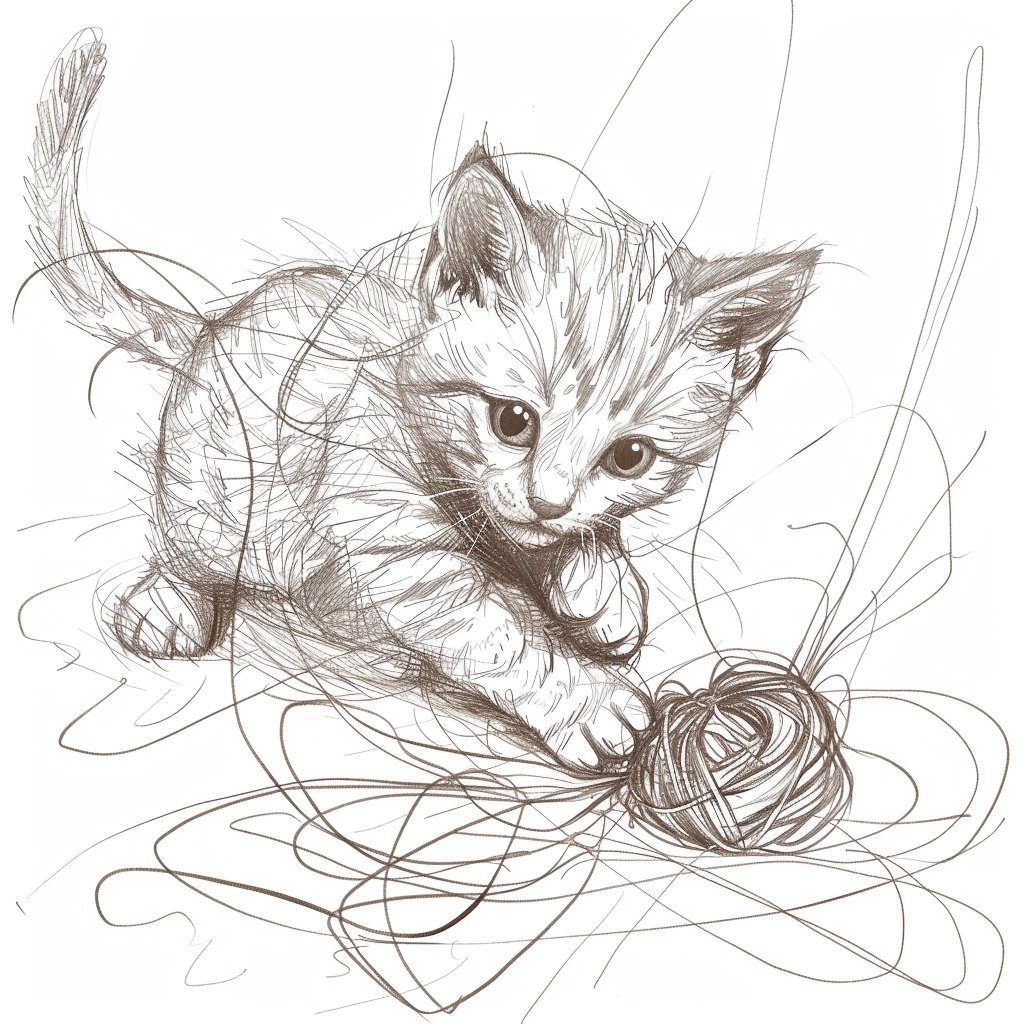
A
Begin with the yarn ball, using uneven loops to create a sense of movement and chaos.
Then, sketch the
The ears should be forward, and the whiskers spread wide, showing engagement.
The trick here is to convey the interaction between the
Cat with a Butterfly

The magical moment when a
Start with the
The eyes, wide and focused, should lock on the butterfly, which you can place a few inches away.
I like to draw the butterfly in mid-flight, wings spread wide, to contrast with the
This scene is about the potential for action, the split-second before the leap. Incorporate surroundings like grass or flowers to set the scene and add depth to the story you’re telling.
Unique Drawing Styles
Exploring different drawing styles can really open up your artistic horizons and add an exciting variety to your portfolio.
As a passionate illustrator, I’ve found that experimenting with various techniques not only challenges my skills but also provides a refreshing way to interpret my favorite subjects: cats.
Let’s jump into some unique styles that you might want to try out.
Chibi Cat

Chibi refers to a Japanese drawing style that is characterized by oversized heads and large eyes, with the body being much smaller in comparison.
Drawing a chibi
To start, sketch a large, round head and two big eyes that take up most of the face.
Remember, chibi eyes are very expressive, so make them sparkle! A tiny nose and a wide, curved mouth will give your
For the body, keep it simple and small, emphasizing the fluffiness with a few quick strokes. Paws can be exaggerated just slightly to maintain that cute appeal. This style is perfect for creating character designs or for anyone looking to add a dose of cuteness to their artwork.
Realistic Cat
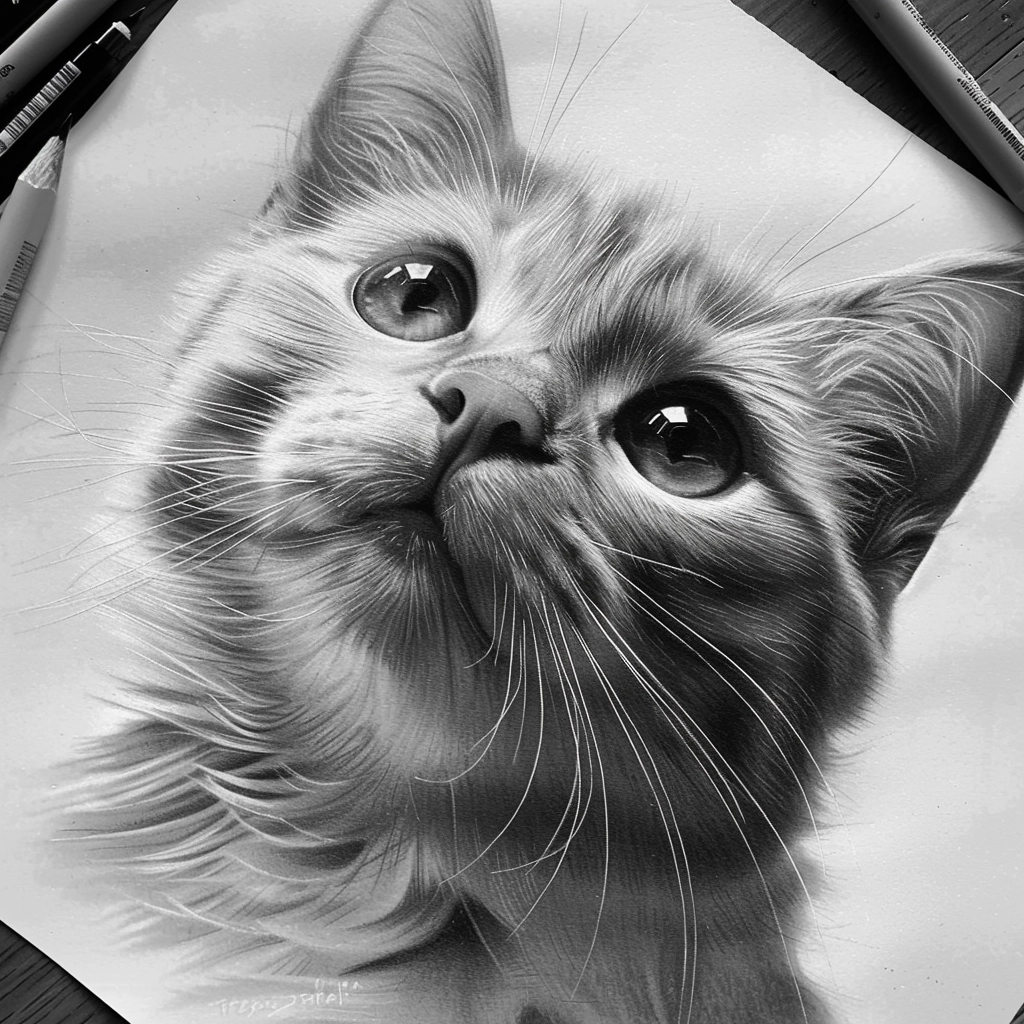
Drawing a realistic
It’s a style that demands patience and attention to detail but is incredibly rewarding.
Start with a basic skeletal structure to get the pose right, then layer muscles and fur, paying close attention to the direction and length of the fur in different parts of the body.
Studying photos of cats can be extremely helpful.
Notice how the fur lays on their body, the way light reflects in their eyes, and how their muscles move under their skin.
When it comes to fur, use fine, hatching strokes to build up texture.
Don’t forget the whiskers – they’re a crucial detail that adds to the realism.
Blending and layering your medium can help achieve the softness or coarseness of the
Anime Cat Girl
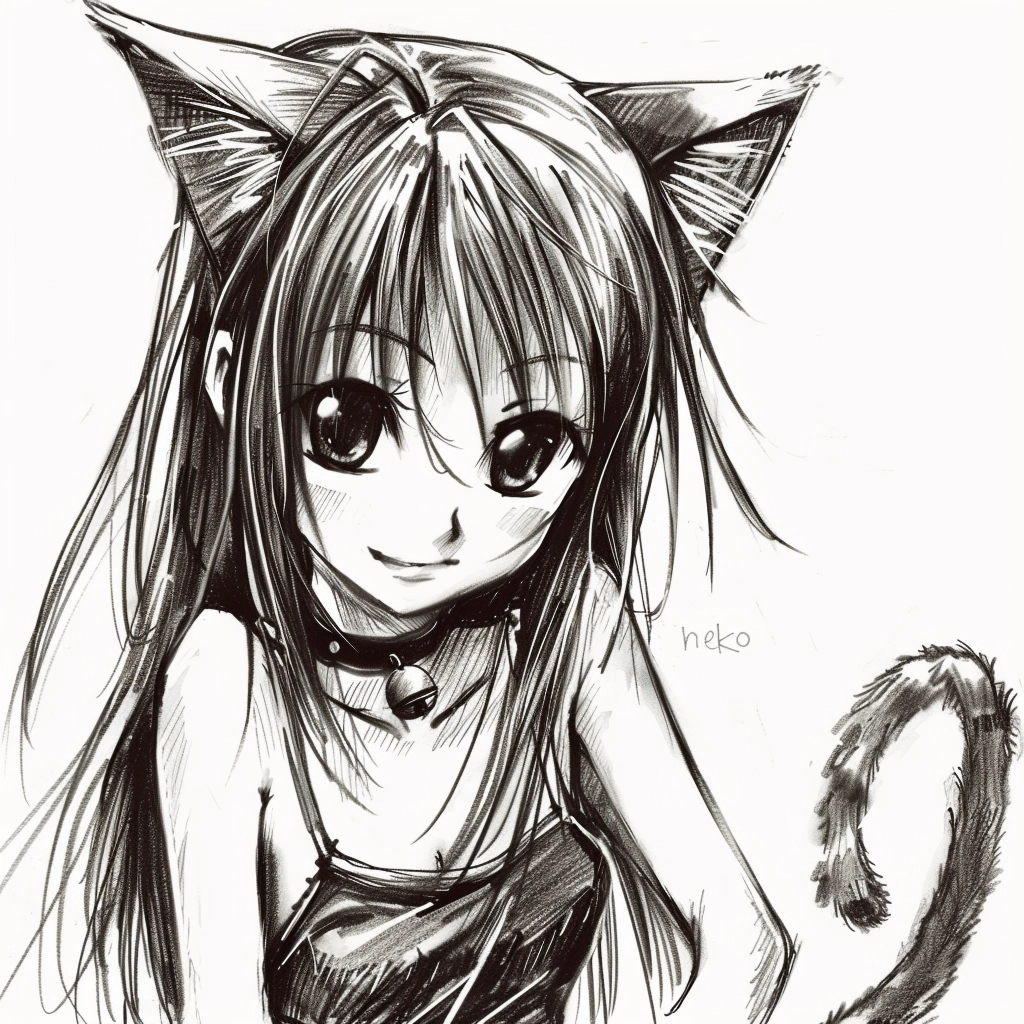
Anime
They usually have human bodies with
Drawing an anime
Begin with a slender figure, keeping the limbs and torso elongated and delicate.
The head should be a bit larger than in realistic human proportions, with large, expressive eyes.
Adding
When drawing the face, remember anime expressions are exaggerated – big eyes for surprise, a tiny nose, and a small mouth.
The tail and any fur detailing should flow naturally with the character’s pose, adding to the dynamic feel of the drawing.
Finally, adding fun details like a bell collar or stripes can further emphasize the
Incorporating these styles into your artistic repertoire isn’t just about improving your skills; it’s also about discovering new ways to express your creativity.
Whether you’re sketching a chibi
And who knows?
It might just spark a new passion or lead you down a path you hadn’t considered before.
Cats in Their Environment
Drawing cats in their natural or imagined environments adds a whole new layer to our creative endeavors.
It’s not just about capturing the feline form but also about situating them in settings that tell a story or evoke a mood.
Hence, let’s jump into some scenic ideas that bring our sketches to life.
Cat Amongst Flowers

Imagine a serene garden, where blooms and foliage create a colorful world.
Here, I’ll guide you on sketching a
Start by choosing flowers that vary in size and shape, like tulips, daisies, and lavender for variety and texture.
Then, sketch your
Pay attention to how the light filters through the leaves, adding depth and contrast to your
A tip here is to use a lighter touch for the flowers in the background, creating a sense of depth and making your
Cat on a Window Sill

This scene is a classic, conveying both coziness and curiosity.
To start, envision a simple window frame, adding details like wood grain or peeling paint for character. Next, place your
The
Incorporate elements like a softly billowing curtain or a few outside branches leaning towards the window.
These additions not only enrich the scene but also help in creating a compelling narrative.
Also, to bring the outside in, consider adding a warm sunrise or a bustling street scene, offering a contrast to your
Cat in a Cardboard Castle
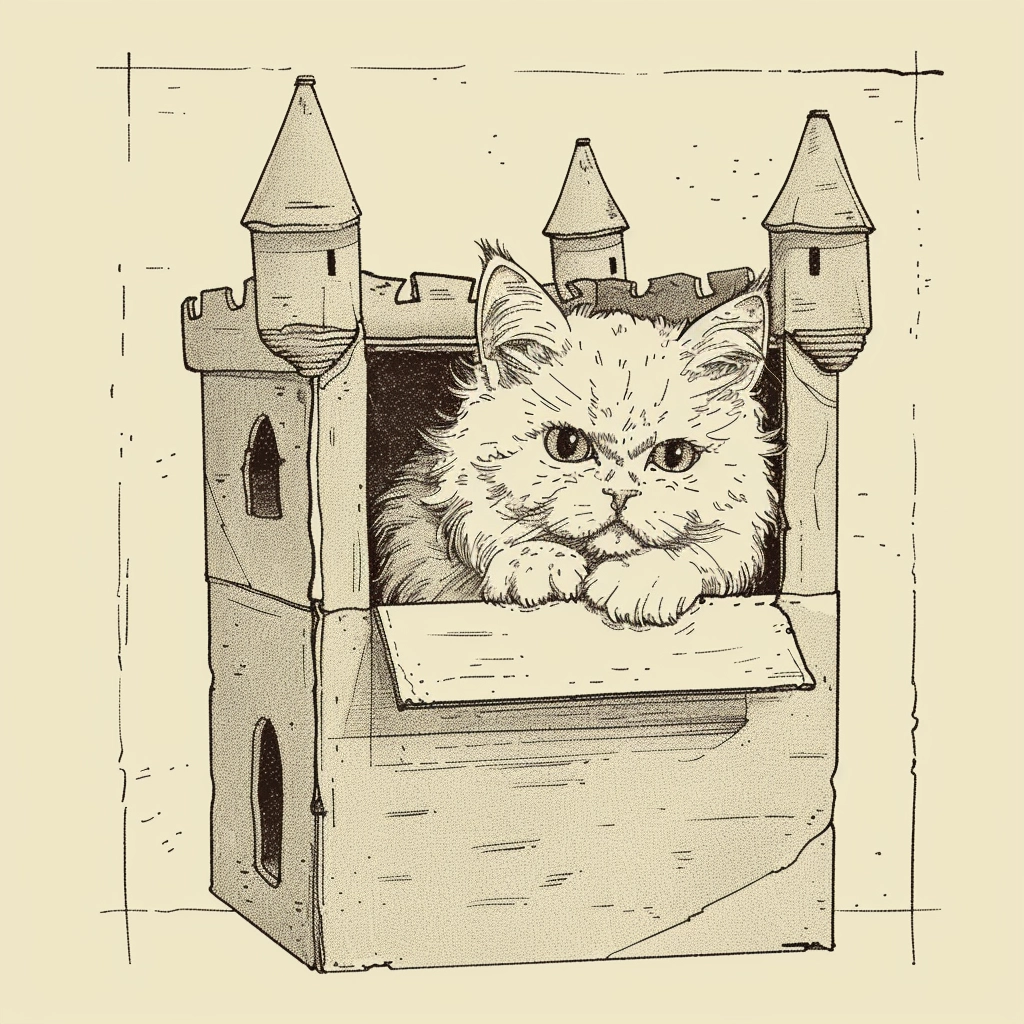
Ah, the classic feline love affair with cardboard boxes! But, let’s take it a step further by imagining a
First, you’ll need to sketch a variety of boxes, some open, others closed, with cut-out windows and doors to create a whimsical fortress.
Texture is vital here; mimic the corrugated surface of cardboard with careful shading or hatch marks.
Then, place your
Perhaps it’s peeking out from a boxy turret or lounging regally atop the highest box. Remember, cats have personalities, so whether your feline is a daring explorer or a lazy lord, let that guide its pose and expression.
Finally, don’t forget to add a few scattered toys or a loyal mouse knight to complete this charming, playful scene.
Drawing cats in their environment is an exercise in creativity and observation.
Mix and match these ideas, and don’t be afraid to experiment.
Whether it’s a flower garden, a cozy window sill, or a cardboard castle, each setting offers a unique backdrop to explore the beauty and mystery of our feline friends.
Remember, the key is to capture not just the physical details but also the mood and character of these beloved creatures and their surroundings.
Creative Cat Concepts
Expanding on mastering classic poses and dynamic actions, let’s jump into the area of the imaginary for those of us who love to blend creativity with our affection for cats.
Drawing these creatures in whimsical scenarios not only challenges our skills but also allows us to explore the limitless possibilities of our imagination.
Cat Planet

Imagine a world where cats reign supreme, floating through space, a giant planet shaped like a
Use fine lines to mark out areas where
For a touch of realism in this fantastical drawing, remember to shade one side of the planet to indicate light from a distant sun, giving it a spherical feel.
It’s a fun way to combine a love for astronomy and felines, introducing a playful twist to typical planet drawings.
Cat Riding a Cloud
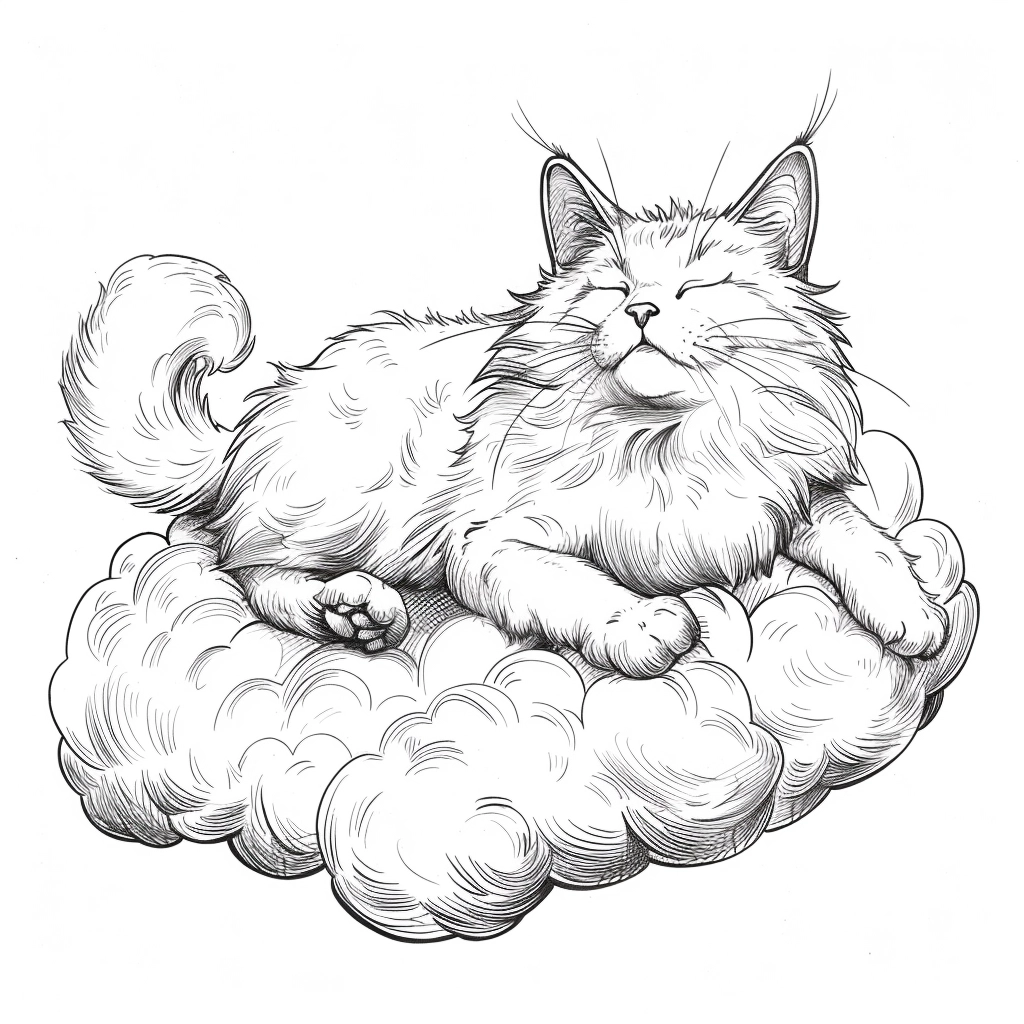
Picture a serene scene of a
This idea brings together the lightness of clouds and the grace of cats in a harmonious composition.
Begin with a fluffy cloud shape, using light, circular movements with your pencil to capture the cloud’s airy texture.
On top, sketch a
Adding subtle lines to suggest the cloud’s movement and the
This concept plays with the whimsical idea of cats having realms beyond our own, offering a peaceful image that’s both dreamy and delightful.
Cat with a Surprised Look
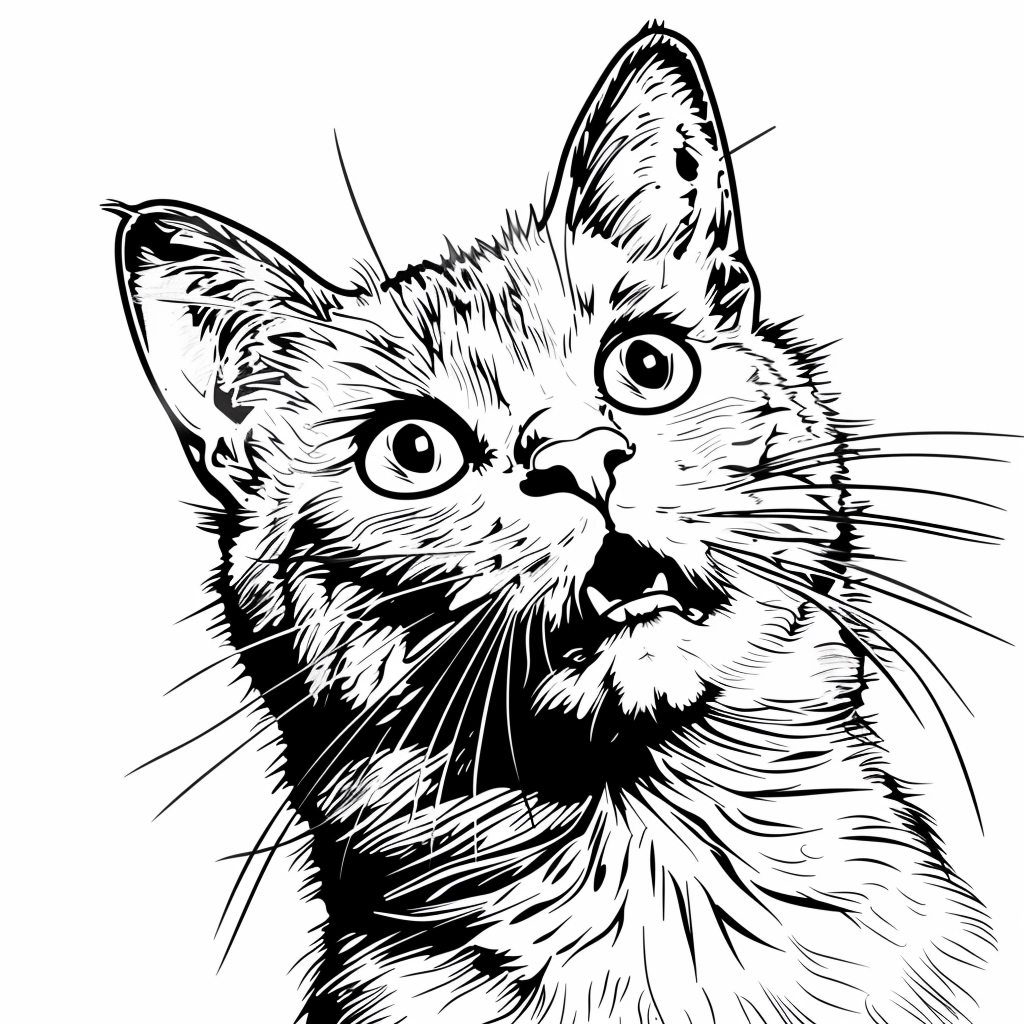
We’ve all seen those viral photos of cats with hilariously surprised expressions.
Capturing this in a drawing can bring a smile to anyone’s face. Start with wide, round eyes, emphasizing their openness to sell the surprised look.
Eyebrows angled upwards can help accentuate this expression. For the mouth, a small ‘o’ shape adds to the shocked demeanor.
Remember, body language can further express surprise, so consider drawing the
It’s essential to keep the lines smooth and fluid to maintain the
This idea is excellent for practicing capturing emotions and expressions, showcasing cats’ often unpredictable and humorous nature.
Drawing Cats with Other Elements
Expanding the creative horizon, drawing cats with other elements can significantly enrich your art portfolio.
These combinations not only enhance the visual appeal but also open up narrative possibilities in your work.
Cat and Their Book

Drawing a
To convey this vibe, start by sketching a relaxed
Pay attention to the
To add more depth, include some book-themed elements around, like glasses, bookmarks, or even a tiny reading lamp.
Remember, the book’s size should be proportional to our feline friend, maintaining whimsy without overshadowing the
Cats and Food: Ice Cream Shape Cat
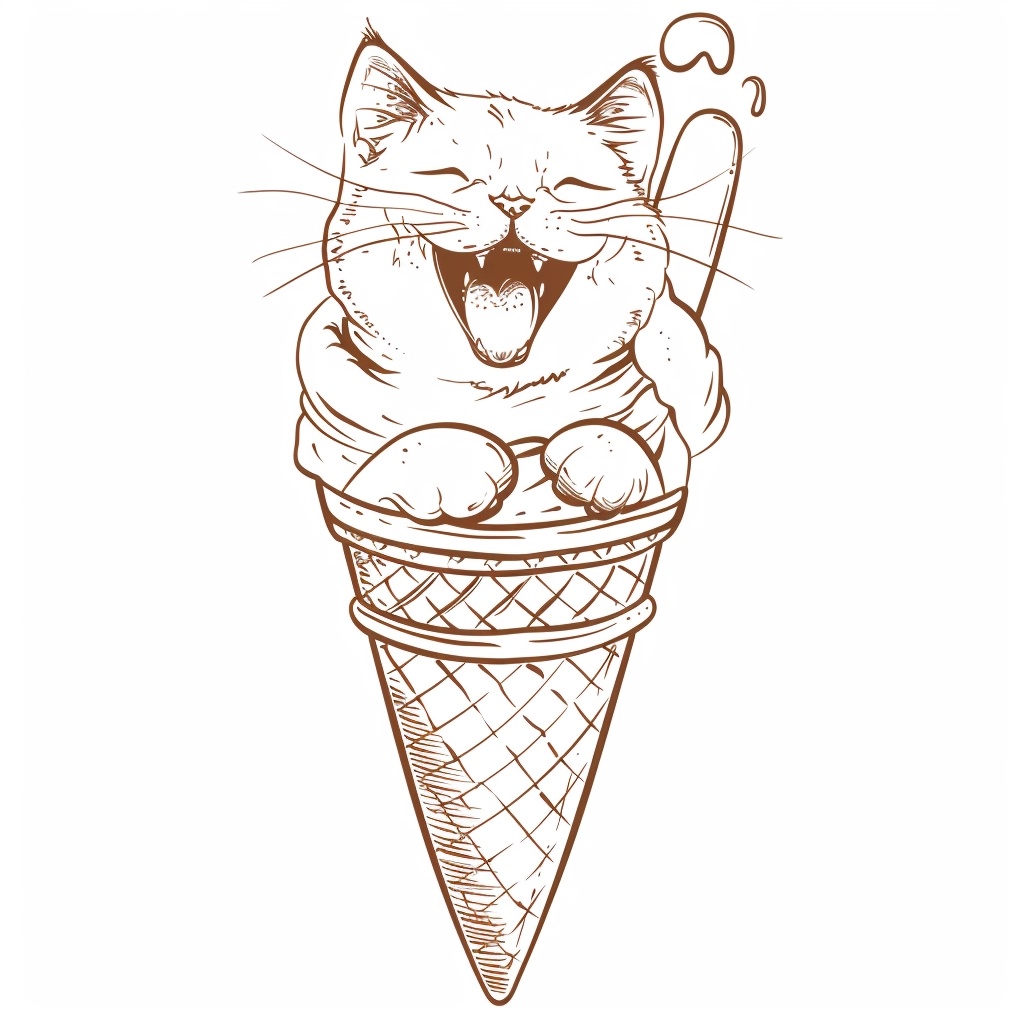
Drawing cats combined with food items, like an ice cream-shaped
First, outline a basic ice cream cone structure, ensuring the cone’s texture mimics a waffle pattern for realism.
On top, where the ice cream goes, sketch the
The challenge here lies in seamlessly blending the
Think of creative ways to incorporate elements like swirls or sprinkles to mimic fur patterns.
This whimsical concept can be both a fun exercise and a means to practice merging unrelated objects effectively.
Cat with a Bow Tie
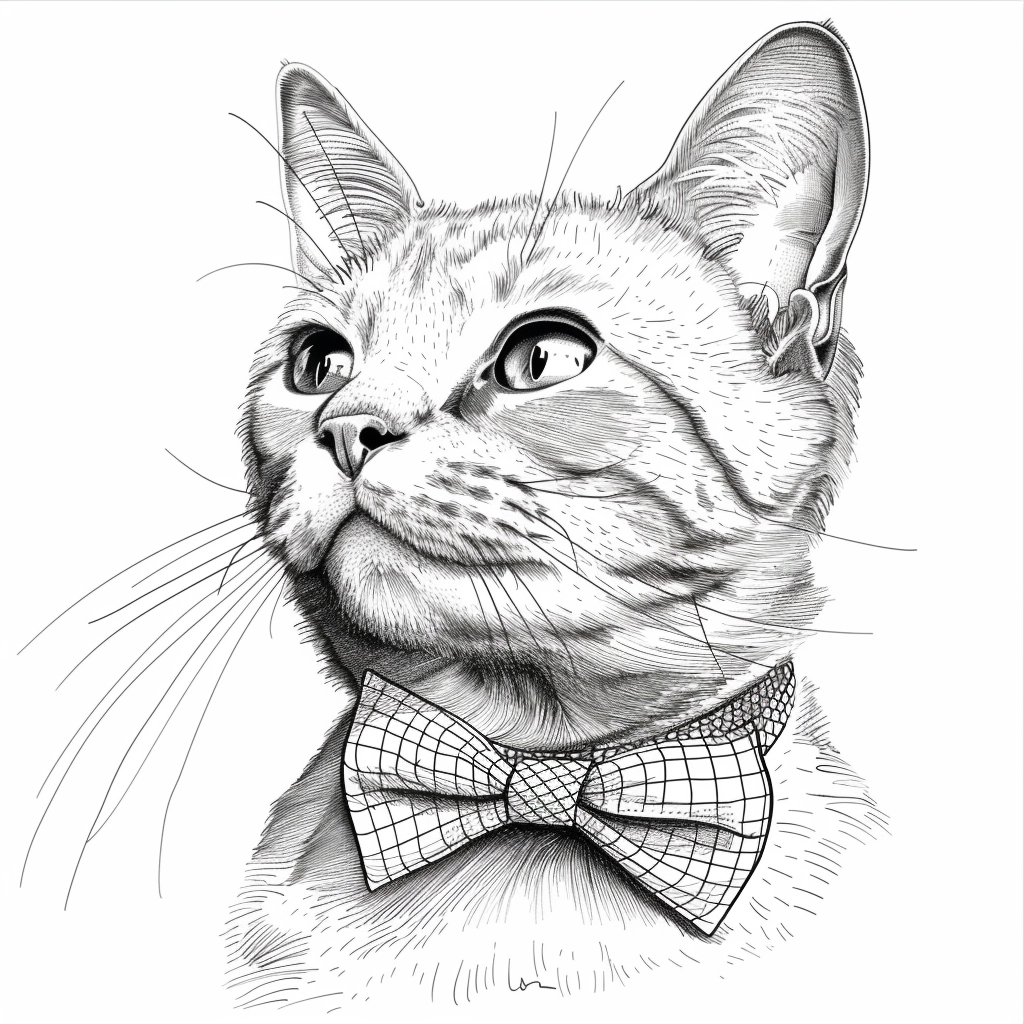
Adding accessories, such as a bow tie, can instantly elevate a
For a
The bow tie itself should be sizeable enough to be noticeable but not so large it overwhelms the
Position it snugly around the neck and introduce patterns or colors that contrast beautifully with the
Such an image suggests a story, perhaps of a
In drawing cats with other elements, the key is to maintain balance.
While the added elements should enrich the scene, they shouldn’t compete with the
Also, using simple props or backgrounds can keep your
Hence, experiment freely, merging elements that you feel passionate about with the universal charm of cats.
This approach not only enhances your technical skills but also adds a unique dimension to your artistic voice.
Technical Drawing Tips
After diving into the playful and imaginative world of
Cats, with their mystique and fluidity, provide a perfect subject for honing your technical skills. Let’s get into the nitty-gritty details.
Drawing Cat Eyes
Cat eyes are more than just windows to the soul; they’re a challenge to capture correctly but immensely rewarding when done right.
Start with the basic shape, which is an almond. But, it’s crucial to observe that the top line of the eye tends to be sharper and more arched, whereas the bottom line is slightly rounder.
This small nuance makes a big difference in making your
When adding the pupil, remember, it’s not a perfect circle but an elongated vertical slit that adjusts with the light.
Placement is key.
Leave ample white space around the pupil to give that characteristic intense gaze.
For an extra touch of realism, add a small circle to represent the light reflection. It breathes life into your drawing.
Cat Paw Details
Cat paws might seem simple at first glance, but they’re a treasure trove of delightful details that can add authenticity to your drawings.
Firstly, the paw pads: don’t just draw them as random blobs.
Notice the three smaller pads form a triangle with a larger pad at the base.
Paying attention to this layout adds accuracy to your depiction.
Besides, when a
Remember, claws are retractable, so depict them accordingly based on your
Shading and Texture Techniques
Shading injects depth and volume into your
Start with lighter strokes to map out the direction of the fur.
Cats have areas where the fur is darker or lighter, depending on how it lays and where the light hits.
Use hatching for softer shades and cross-hatching in darker regions to give a sense of depth.
Texture is what makes the
Don’t forget the whiskers – a gel pen or a fine tip marker over dry pastel can achieve strikingly thin, straight lines that whiskers demand.
These nuanced techniques can transform a good drawing into a great one.
By focusing on the eyes, paws, shading, and texture, you’re not just drawing a
Keep these tips in mind, and watch your
How To Unleash Your Creativity
After delving into various facets of drawing cats—from mastering classic poses and capturing the intricate details of their form to embracing whimsical concepts like
But, the final step lies in weaving these skills and ideas into your unique world of creativity.
Here’s how to solidify that creative prowess and make your
First off, experiment without limits. Think beyond the conventional.
Why not draw a
The fusion of history, fantasy, and technology can birth astonishing results, showcasing your versatility and imagination.
Next, texture and color are your allies. Use them wisely.
If you’ve mastered shading, jump into the world of colors. Cats don’t just come in orange, black, or white; there’s a kaleidoscope of colors and patterns to explore.
Try depicting the glossy sheen of a black panther or the delicate hues of a calico. Each texture and color adds a layer of depth and vibrancy to your artwork.
Besides, storytelling enhances your art. Imagine scenarios and build narratives around your
Perhaps the
Maybe the
Stories evoke emotions, making your drawings more relatable and memorable.
Also, technical skills are essential, but so is understanding
This real-world observation pays off by adding authenticity to your drawings.
Finally, share your work.
I can’t stress enough how valuable feedback is.
It’s not just about praises; constructive criticism is gold. It propels you forward, helping you see your work from a new perspective.
Whether it’s through social media, online forums, or art exhibitions, getting your art out there opens doors to endless possibilities and learning opportunities.
Let Us Know Your Favorite Cat Drawing Idea
I’ve shared a plethora of
It’s been a journey exploring the many ways to bring these furry friends to life on paper.
Whether you’re captivated by the elegance of a
I’m eager to hear which
Jump into these concepts, experiment with textures and colors, and most importantly, enjoy the process of creating.
Your feedback is invaluable as we continue to explore the art of drawing together. So don’t hesitate to share your thoughts and your own
Let’s keep inspiring each other and growing as artists in this fascinating journey.
